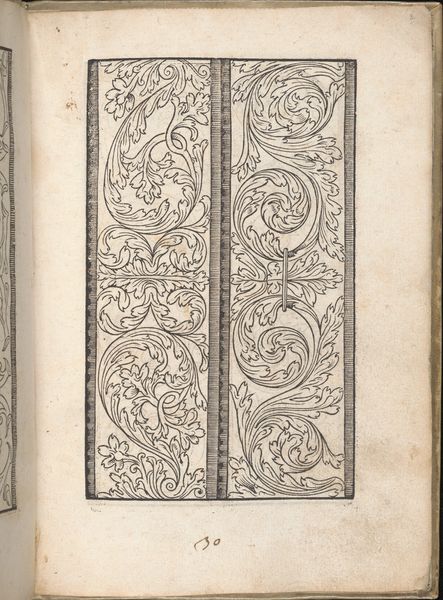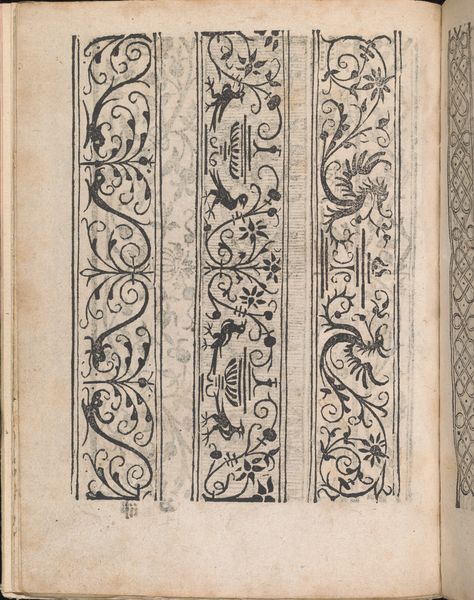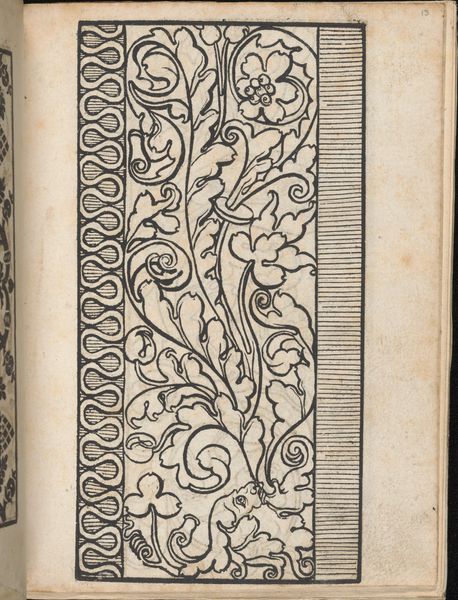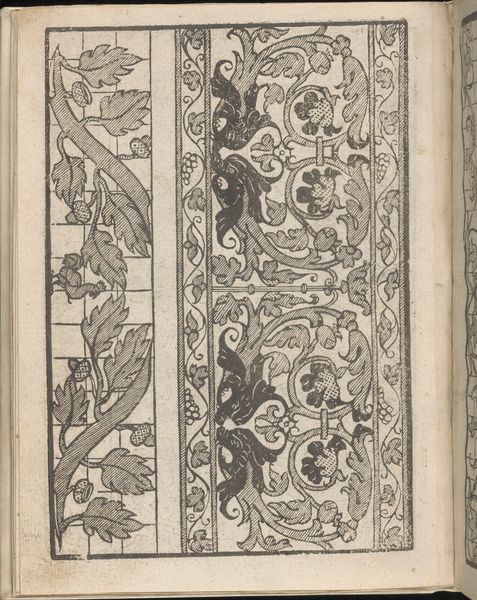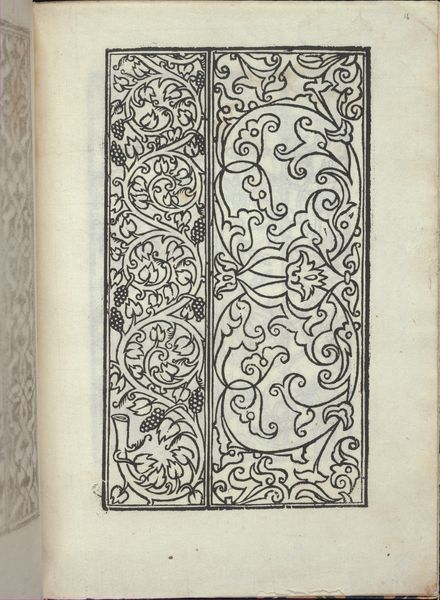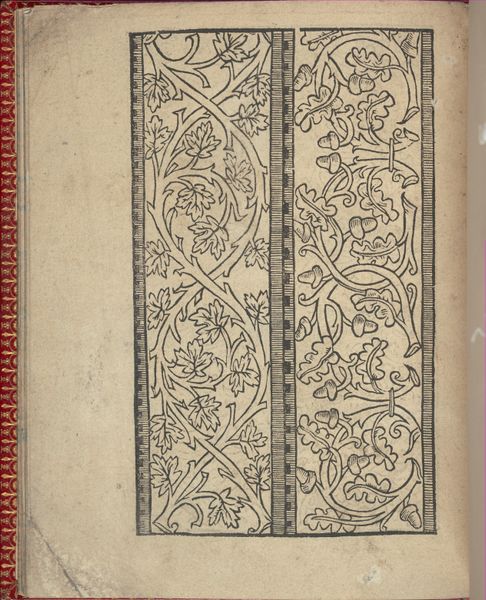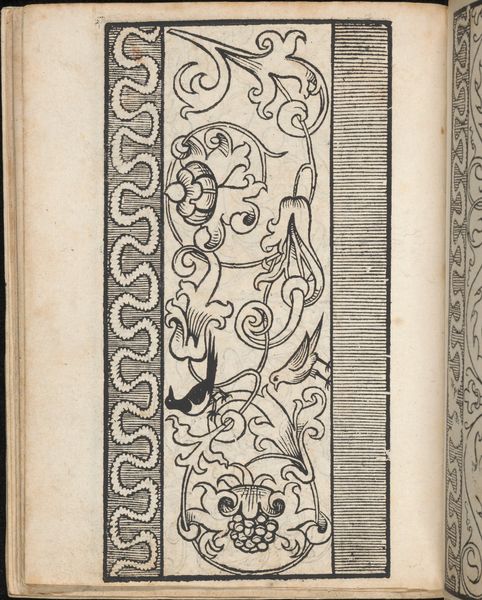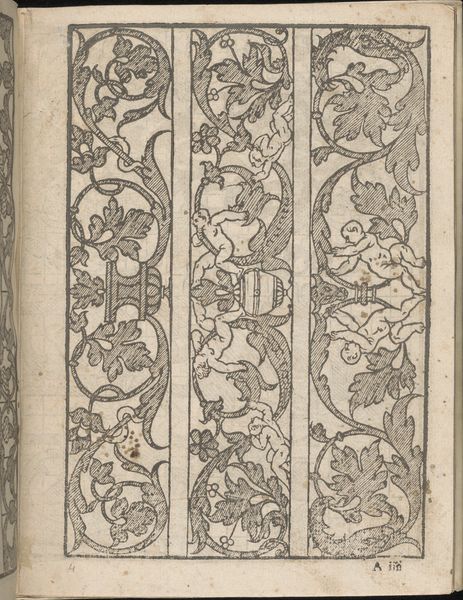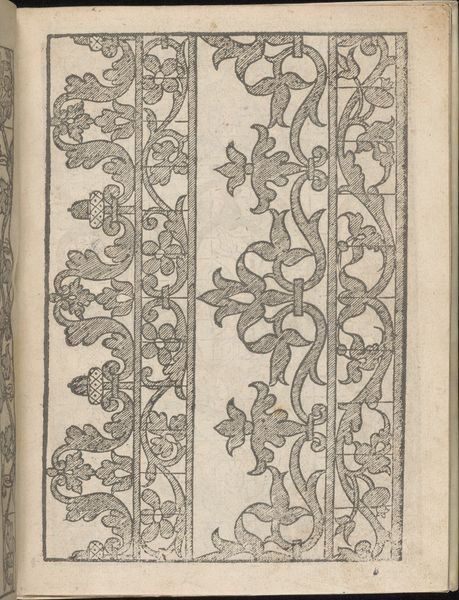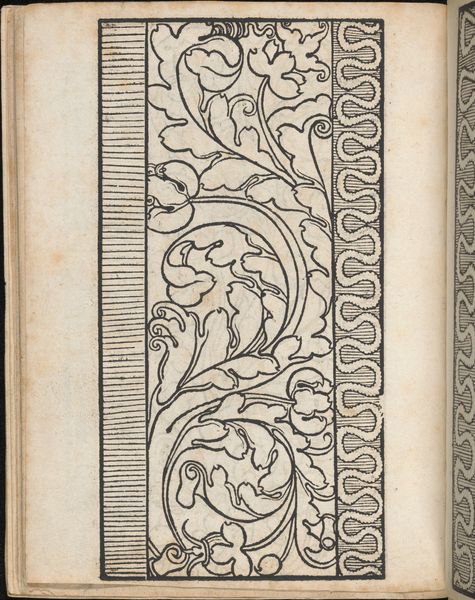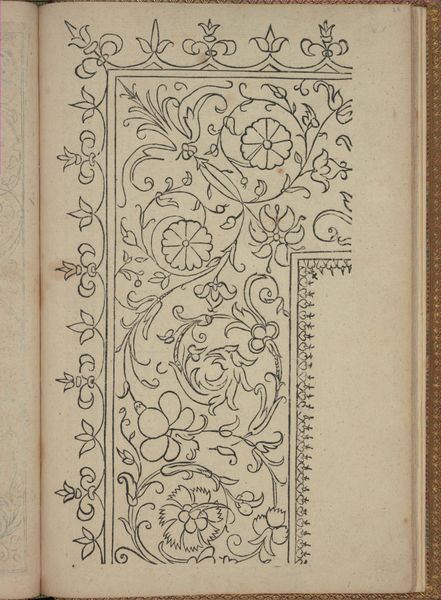
Ein new Modelbuch..., page 9 (recto) 1524
0:00
0:00
drawing, ornament, print, ink, woodcut
#
drawing
#
ornament
#
pen drawing
# print
#
book
#
11_renaissance
#
ink
#
geometric
#
woodcut
#
line
#
northern-renaissance
#
decorative-art
Dimensions: 7 5/16 x 5 3/8 in. (18.5 x 13.6 cm)
Copyright: Public Domain
Curator: Here we have a page from “Ein new Modelbuch…", specifically page 9. This is a woodcut printed with ink by Johann Schönsperger the Younger, dating back to 1524. Editor: Immediately striking! It possesses a kind of stark beauty, these botanical forms rendered with such deliberate linearity. You can practically feel the resistance of the wood under the cutter's tool. Curator: The "Modelbuch," or pattern book, was incredibly significant in disseminating design motifs across Europe. This particular page presents two distinct ornamental patterns, both featuring botanical elements. Consider the cultural implications of these images circulating. Editor: Exactly. This wasn't some "high art" object meant for display, but a utilitarian pattern intended for broader craft production. Who would have been referencing this book? Embroiderers? Goldsmiths? Curator: Likely both and more! These pattern books allowed for the transmission of style, creating visual dialogues across different crafts and regions. Each flower or swirling leaf held meaning, recognized by artisans and their patrons. Editor: You can also see the labour in this piece. The consistent line work suggests both skill and efficiency – designs intended to be replicated without great individual interpretation. Curator: But those seemingly straightforward lines carry echoes of the Northern Renaissance—a move toward intricate detailing married with burgeoning industrial capabilities. These patterns, once exclusive to the elite, become accessible to a burgeoning merchant class. Editor: And consider the act of printing itself! The press, this new technology of dissemination, completely altered the landscape. It's not simply the design being distributed, but a whole method of standardized making. Curator: Precisely. The symbolic language within these repeating patterns became a shared vocabulary, impacting not just aesthetic preferences but reinforcing a communal visual culture. What seems like mere decoration becomes deeply enmeshed with cultural values. Editor: It reminds us that even seemingly minor or "decorative" images have the power to shape the material landscape around them. Curator: It leaves me considering how potent and culturally adhesive such visual motifs could become. Editor: Absolutely. It's a testament to how the tools and processes shape not only objects, but also societies.
Comments
No comments
Be the first to comment and join the conversation on the ultimate creative platform.
